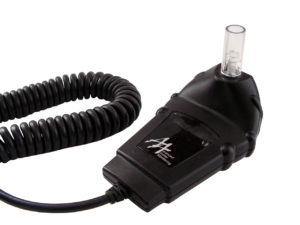
We work with a lot of clients who have been charged with driving under the influence. For those offenders who have multiple DUIs on their record or other aggravating factors were present, one stipulation of their sentence may be to install an ignition interlock device (IID).
An IID ensures that a person does not have a certain amount of alcohol in their system before there car will start. For some offenders, their car won’t start if any alcohol is detected on their breath, while others need to adhere to a lower threshold like 0.04 or 0.02. If you’re not driving, you can still drink alcohol as you please, but if it’s still in your system when you need to drive, not only will your car not start, but the failed attempt will be logged and sent to the court, which may be a violation of your court order.
Most people can plan ahead so they don’t need to drive if they plan on drinking, but one question we field a lot is whether or not a person will fail a test if they drank the night before. There’s no straightforward answer, because it depends on a number of factors. Below, we explain whether or not you’re likely to fail a test if you drank the night before, and how to avoid failing a test the next day.
Ignition Interlock Devices The Day After Drinking
When it comes to determining whether or not you’ll have alcohol in your system the next morning when you go to start your car, you really only need to consider two factors – how much you drank and how much time has passed. It takes about an hour to metabolize an ounce of alcohol, and a standard 12oz beer usually has between 0.6 and 1.0 ounces of alcohol in it, so to err on the safe side, assume that it takes about an hour for one beer to make it out of your system. Using this math, if you have five beers last night and went to bed at 10 p.m., you should have no problem blowing zeroes at 6 a.m. the next morning.
That being said, people don’t always stick to a standard can of beer. Bigger cans mean more alcohol content, while some beers have more alcohol by volume than others. Others prefer cocktails, and there’s no guarantee that gin and tonic from the bar had exactly one shot’s worth of alcohol in it. There’s no perfect system for determining when the alcohol is out of your system.
There aren’t any tricks either. Despite what you may have heard, drinking coffee, taking a cold shower or eating a large meal isn’t going to prevent the sensors from picking up on the alcohol in your system. So how can you ensure you don’t fail the test the next day?
There are two tips we recommend. For starters, keep that math equation in your head and know when you are going to need to drive the next morning. Don’t assume you can drink eight beers, be done drinking by 10 p.m. and assume you are always going to be good by 6 a.m. Give yourself plenty of leeway when it comes to letting alcohol exit your system.
Secondly, consider investing in a portable breathalyzer test. These things can help determine if you still have alcohol in your system before you take the ignition interlock test. Portable IIDs aren’t always the most accurate, and while they should not be used as a way to gauge if you’re under the legal 0.08 driving limit, they can be useful in determining if you’ll fail the vehicle-installed device. If these cheaper versions can detect alcohol in your body, you can bet the IID in your car will detect it.
So plan ahead and know your limits the night before, do the math in your head and test your breath on a portable IID. If everything checks out, you’ll probably pass the vehicle IID, but again, there are no guarantees. For more information about IIDs or drunk driving charges in Minnesota, reach out to Appelman Law Firm today.





